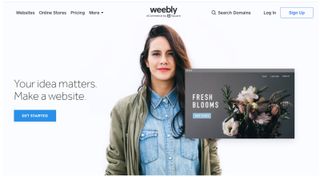We recently reported on the split between the WHATWG HTML 'living standard' and the W3C HTML5 snapshot-oriented specification, while WHATWG spec editor Ian Hickson gave us his thoughts regarding the technology's future. In this interview, W3C head of communications Ian Jacobs (IJ) talks to .net about the split, forking issues, processes, and what sponsorship from Adobe, Microsoft and Google will mean for the W3C.
.net: What's your take on the WHATWG/W3C 'split'?
IJ: W3C and WHATWG have an ongoing partnership around HTML. There is a lot of community overlap, which helps ensure that both communities are aware of and participating in the efforts and innovations of the other. W3C recognises the valuable contributions of the WHATWG and looks forward to our ongoing collaboration. W3C CEO Jeff Jaffe has also posted on this topic.
.net: How will the W3C work to ensure the spec doesn't become forked?
IJ: HTML5 is already quite stable and the HTML Working Group chairs have announced a stabilisation plan for advancing to Recommendation. Developers seeking stability should check out that plan.
In parallel, people are always proposing new ideas for HTML, CSS and other Open Web Platform technologies. Some of those features end up implemented by a small number of software vendors, some more broadly, and some will become part of the next stable standard from W3C. W3C is working with the WHATWG and other partners on HTML.next features. W3C is also ramping up our testing effort to help ensure broad interoperability, not just among browsers, but also authoring tools, content-management systems and software from other web producers; and consumers on desktops, mobile phones, televisions, automobiles, and so on.
.net: How soon will HTML5 become a 'stable standard'? We've seen 2014 reported, but is that soon enough? Won't any 'final' standard be considered an irrelevance by then?
IJ: We are still targeting 2014, and we are seeing commitments from a growing number of members and individuals to ensure we reach that goal. W3C members Adobe, Google and Microsoft have provided sponsorship funding to enable W3C to hire additional staff to this end, and the HTML Working Group chairs have appointed four editors (with more appointments pending) to keep us on track.
It's also useful to note that W3C specifications are often stable well before they are finalised. For instance, feature sets are typically known before the Candidate Recommendation phase, when we focus on the implementation experience.
.net: With browser vendors rapidly providing updates, will W3C strive to speed up its processes where possible?
IJ: A year ago we introduced a very fast process for people to start work on new ideas for the web: we call them Community Groups. It is now easier for people with shared interests to collaborate at W3C. More than 1,600 people have joined these groups in the first year.
Some of that work will advance to the standards track. We are also looking at improving our standards track process and operations. I agree it is important that we be responsive to the increased demands placed on W3C given the expansion of the web.
.net: What does the sponsorship deal you mentioned earlier mean for W3C?
IJ: W3C will use the sponsorship funds from Adobe, Google and Microsoft for additional W3C staffing of the HTML Working Group. This will help us keep to our 2014 target. Sponsorship is just one of the ways the W3C membership helps the organisation get work done. Companies provide dedicated editors, group chairs, hardware or software to run services like the W3C validator. We welcome this support from our community.




